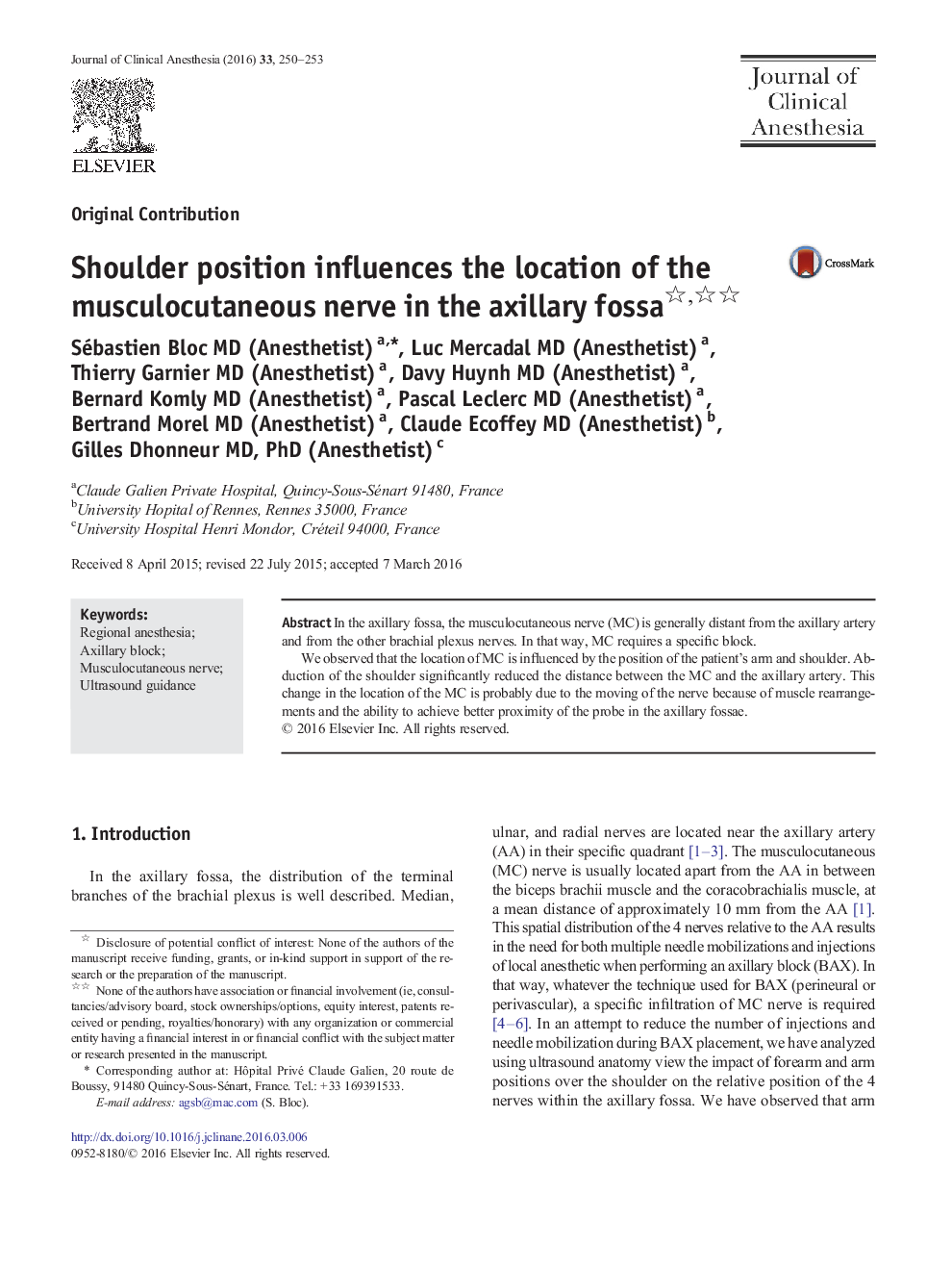| Article ID | Journal | Published Year | Pages | File Type |
|---|---|---|---|---|
| 2762112 | Journal of Clinical Anesthesia | 2016 | 4 Pages |
•Axillary block performance requires several injections and needle mobilizations.•Arm positions can influence the location of nerves in the axillary fossa, specially the musculocutaneous nerve.•New techniques could be considered in accordance with the arm position.•New techniques can promote a reduction of the number of needle mobilizations and injections.
In the axillary fossa, the musculocutaneous nerve (MC) is generally distant from the axillary artery and from the other brachial plexus nerves. In that way, MC requires a specific block.We observed that the location of MC is influenced by the position of the patient's arm and shoulder. Abduction of the shoulder significantly reduced the distance between the MC and the axillary artery. This change in the location of the MC is probably due to the moving of the nerve because of muscle rearrangements and the ability to achieve better proximity of the probe in the axillary fossae.
